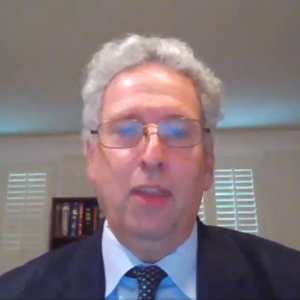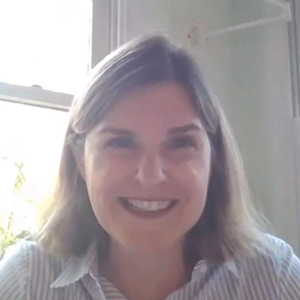A FERC technical conference on Western resource adequacy began Wednesday with Chairman Richard Glick joining the chorus of those calling for the West to form one or more RTOs soon.
He cited last year’s rolling blackouts in California, extreme heat waves in the West, and strained resources across the region. The West already had one serious heat wave in June and expects triple-digit temperatures this weekend from Tucson, Ariz., to Portland, Ore., he said.
“Portland’s supposed to get to like 110 degrees in June,” Glick said. “That’s amazing to me, and we saw extremely hot weather in California and parts of the Desert Southwest last week. And so we know that climate change is with us, and it’s going to present significantly increased challenges in terms of stress on the system.”
(The National Weather Service said Portland hit a record high temperature of 112 degrees Fahrenheit on Sunday and forecast Monday’s high at 114.)

NERC and WECC reported that areas of the West may not have the capacity to meet peak demand as soon as this summer, Glick said. (See Summer Bringing ‘Elevated Risk,’ NERC Warns.)
“I believe a regional transmission organization, or maybe a couple of regional transmission organizations, in the region would be a big part of the solution,” Glick said.
“I’m well aware of the history associated with the Western energy crisis 20 years ago and how that soured a lot of people in the region on developing an RTO beyond California’s borders,” he said. “While there has been a lot of progress, the [CAISO Western Energy Imbalance Market] for instance, much more work remains. In my opinion, the time is right for the states, the region’s utilities and other key stakeholders to go ahead and finish the job.”
Commissioner Allison Clements agreed. Since the energy crisis of 2000/01, FERC has tried to leave Western entities alone to ensure their own resource adequacy and to design markets that promote reliability and cost savings, she said.

“This commission has been wise to respect [the West’s] processes and not work to scare off progress from the East … [but] the urgency has changed,” Clements said. “The urgency of efforts toward broader regional integration has changed in the last year, even in the last six months. The shared goals of ensuring reliability against these extreme weather threats, the goals of meeting state policy mandates [regarding greenhouse gas emissions], and the goals of protecting consumers in the process require continuing progress toward full regional integration.
“And it’s no secret that I, like the chairman, believe that well designed regional markets — designed by westerners for westerners — are the best path forward to protect customers and ensure reliability while addressing resource adequacy concerns and the other serious challenges facing the West.”
Doing so successfully will require transparent and effective market design and inclusive, fair governance, she said.
The commissioners’ comments were the latest push toward a Western RTO.
The Public Utilities Commission of Nevada said last week that the West needs an organized market. Lawmakers in Nevada and Colorado passed bills that require transmission owners to join an RTO by 2030. And a state-led study funded by the U.S. Department of Energy found the West could save $2 billion annually by forming a single RTO. (See Nevada PUC Calls for Organized Market in West and Study Shows RTO Could Save West $2B Yearly by 2030.)
RTOs, Capacity Markets
In a subsequent panel Wednesday, FERC Commissioner Mark Christie asked panelists, who had been discussing challenges and trends in resource adequacy across the West, an open-ended question about whether Eastern-style RTOs or capacity markets would work in their region.
He got a series of nuanced answers that touched the relevant points on both sides of the argument.
Bryce Freeman, administrator for the Wyoming Office of the Consumer Advocate, said he did not understand how the development of a sound, resource adequacy construct that provides the lowest-cost assurance to customers gets done without a capacity market.
“I’ve thought about this a lot over the years,” Freeman said. “Energy-only markets, I don’t think work. That was part of the problem in Texas in February. The system needs reliability, costs money, and reliability in the form of capacity that can be dispersed when needed. Whether that’s battery storage or gas or coal, or something else [like] hydrogen, the markets, or the customers, need that reliability. I don’t see how you value that prudently without making a market for it.”
Mark Holman, managing director of Powerex, conversely added that whenever the topic of resource adequacy comes from the West, raising the concept of a centralized capacity market along with it, “there is generally strong resistance to that structure.” Holman favors a capacity market “in the form of bilateral transactions” that allow entities autonomy to decide what mix of resources — contracted or owned — work best for them.
Carrie Bentley, CEO of Gridwell Consulting, said there is a “robust” bilateral market in the West, and “capacity markets work best when you have a uniform product.”
“When you have resources where you can easily compare the reliability, they have a similar obligation to the market,” Bentley said. “I think the diversification of resources out here from year to year, and from hour to hour even, on what their contribution to reliability is, makes it really challenging to run a market, similar to the Eastern RTOs.”
Bentley said as much as she could see “benefits of capacity markets in general, I just don’t think they’re well-suited to the West’s resource mix or diverse set of buyers.”
Paul Lau, CEO of the Sacramento Municipal Utility District, said there must be a way to control “how we want to address reliability … and not be something that’s mandated through a capacity market.”
“I think it’s absolutely important right now that we don’t have a mandatory capacity market because I think there’s a lot of movement and a lot of good work that we’re doing in the Pacific Northwest, certainly in the Northwest Power Pool,” Lau said. (See NWPP RA Program Taking Shape for Q3 Launch.)
Governance Key
In the conference’s second day Thursday, Scott Bolton, PacifiCorp’s senior vice president of transmission development, said his company had been spending an “inordinate amount of time” working with CAISO to ensure that its integrated planning, procurement and market framework provides enough capacity to help California meet its clean energy goals.
“The stakes couldn’t be higher. We’re already in the midst of a very hot summer,” Bolton said. “It’s increasingly important, if not more important, to work across the interconnection. [FERC’s] effort to facilitate greater dialogue between the fellow regulators and the state is critical. I can’t overstate that, having worked both outside and inside California. I’m acutely aware that we need to keep progressing together and keeping our momentum.”
Agreeing with Bolton, Oregon Public Utility Commissioner Letha Tawney said, “We see that there is a substantial resource adequacy issue heading towards us. It’s abundantly clear that cooperating is to our benefit.
“I very much look forward to that opportunity to have a apples-to-apples conversation, recognizing that there will continue to be a challenge in bridging the California RA system and we’ll all need some sort of clever cheat sheet or translation table,” Tawney said. “I think that’s possible, and I look forward to it.”
So is an RTO the next logical step? Several panelists pushed the idea.
SPP has proposed starting an RTO West, contending it is the logical choice to lead an organized market that includes diverse Western interests.
Bruce Rew, the grid operator’s senior vice president of operations, noted SPP is a reliability coordinator in parts of the West and that it is helping the Northwest Power Pool develop a multistate resource adequacy program. SPP also manages a Western Energy Imbalance Service to compete with CAISO’s EIM. (See SPP CEO Pitches WECC on Western Benefits.)
SPP’s inclusive governance model would serve the West well, Rew said.
“From our perspective, governance is key for these regional organizations to be effective,” he said. “Governance needs to be broad. It needs to be very inclusive for the stakeholders and all parties. Regional markets are going to be very diverse, from the small entities and large entities top the public organizations and state organizations. All those participants are the foundation for an RTO to be successful.”
Western Grid Group Director Amanda Ormond pointed to the potential financial benefits.
“We know that the RTO will save $2 billion [annually] for customers,” Ormand said, referencing the DOE-funded study. “Every year there’s a delay, the customers are paying more than they need to.
“I totally understand that governance is an important issue,” she said. “We need independence of an organization. We need state regulators to have a key place at the table. To build the best, we can look at the governance models all over the countries and the world.”
In the meantime, “we’re getting less reliable because weather patterns are changing,” Ormand said. “Our systems are changing. At some point we need to make a decision to move forward.”


